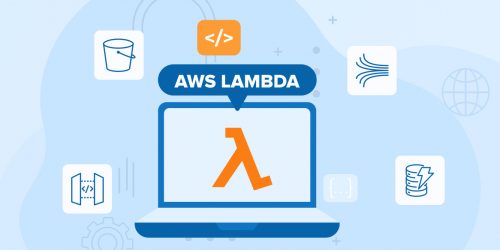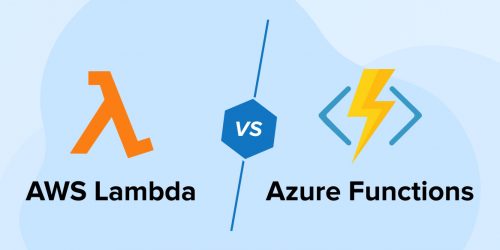Related Blogs

Amazon Web service has a large spectrum of products and services to offer to businesses of all sizes and shapes. Among these, one of the most popular and remarkable services provided by Amazon is AWS RDS (Relational Database Service). With the availability of this relational database service, the tasks of setting up, operating, and scaling a relational database in the Amazon Cloud become easier for software programmers. The most common administrative tasks are automatically facilitated using hardware support, setup functioning, patching, and other database backup and functions. Businesses can scale storage and other computing resources using a single API Call using AWS RDS.
1. What’s the Need of the AWS RDS Software
For a software development company to develop an application ten years ago, there would be some extra challenges to create a server first then a backend application to analyze and install other supporting tools for the applications. Your tasks would not end up there, when the application is up and ready, another task of maintenance would come into the picture, you would have to install updates and the latest security patches for your backend server. Now let’s assume that your application becomes popular and there is a huge amount of traffic deviated on your application. The need to upscale your application becomes your priority and for that, you need to add and configure extra servers which is a costly business.
We have already seen the challenges incurred when you try to develop application years back. What if, all of these tasks are managed by someone else for you and you just have to focus only on the application part and not about backend server configuration and scalability. With the emergence of AWS RDS, it is now possible where all database administration tasks are managed by Amazon RDS itself. Also, it has proven results that significantly reduce the DBA team size in other industries.
2. AWS RDS Components
The following are the major components of AWS RDS
- DB Instances
They are the fundamental blocks of RDS. It is a database environment in AWS cloud where multiple user databases coexist and can interact with each other using the same set of tools and applications that users utilize for standalone database instances.
The DB Instances can be divided into the following types:- Standard Instances
- Memory-Optimized
- Micro Instance
- Regions and Availability Zones
The regions allocated by AWS are highly available data centers spread across different areas of the world. Here highly available data centers mean these virtual servers never fail to show up and are always high-performing. Each AWS region includes several distinct locations called Availability Zones or AZs which are engineered in a way that failure of one availability zone does not impact another one. - Security Groups
The core of DB instances is operated by a security group where the access control is given by creating an IP address for the user who needs permission from the security group to access the operational functions.
Amazon RDS has 3 types of security groups:- VPC Security Group
- EC2 Security Group
- DB Security Group
- DB Parameter Groups
These defined sets of database engines act like controllers to manage the behaviour of the databases. Each DB instance is assigned a default parameter group with the default values if no other DB parameter group is assigned for that instance. - DB Option Groups: With the DB option groups, it becomes easier to manage the databases as Amazon RDS provides the tools used by some DB engines.
3. Features of AWS RDS
Let’s talk about the features of Amazon RDS and they are as follows:
3.1 Minimize Administrative Burden
- For the cases where RDS is easily available, the deployment of the database from project initialization to deploy becomes simpler. The three fundamental factors that help businesses access the production relational database are Management Console, Amazon RDS command-line interface, and simple API calls.
- No need to worry about the installation of the latest software patches for databases as AWS RDS will handle the updating of the relational database software powering your deployment with the latest patches.
- To provide accurate outputs, Amazon RDS analyzes database instances, configuration, and user metrics and offers best-fit suggestions on the database engine, its versions, storage, networking and other factors. This suggestion can be instantly implied later when the upcoming maintenance cycle is scheduled and till then the upgrade can be discarded for the time being.
3.2 Scalability
- With Amazon RDS, scaling the database’s computing and storage resources can be performed within a few minutes often with no downtime. The RAM can be upgraded from 32vCPU to 244 GB.
- Amazon RDS provides provision for additional storage scaling as storage requirements grow. To enable scalability up to 64 TB storage and 16TB for the SQL server, there are tools like Amazon Aurora, Oracle, MySQL, MariaDB, and PostgreSQL engines.
- Amazon RDS enables a replica feature to eliminate redundancy by copying multiple replicas of a single source DB instance and avoid the traffic occurring from high volume applications.
3.3 High Availability and Durability
- If you want to take automated backup then Amazon RDS enables a point-in-time recovery facility for your database. There is an automatic backup retention time of up to 35 days.
- Users can take snapshots of their database instances which are stored in Amazon S3. These database snapshots stay in S3 until the user explicitly deletes it and can be used to create a new instance from it whenever required.
- Amazon RDS is synchronized with multi-AZ (Availability Zone) deployments providing high availability and durability of database instances.
3.4 Security
- Using Amazon RDS, businesses can encrypt the database for better security and authentic access using Keys from Amazon Keys management services.
- Using Amazon VPC, users can now run databases on their own virtual network, with simple configuration and settings of firewall that has access over the network and other essential instances.
- Again, using Amazon RDS, the incorporation of AWS Identity and Access Management becomes simpler for users from the same group AWS IAM can now take control over the actions and other specific implementation of Amazon RDS resources
3.5 Cost-Effective
- When using Amazon RDS, users will just pay for what they use, nothing more, and no other upfront payments, only monthly usage payment.
- Amazon RDS also provides facilities of ‘Reserved instances’ to reserved DB instances for a 1 or 3-year term with a significant discount in pricing.
- Using the facilities of Amazon RDS, it is simpler and economical to use database instances for development and testing, and using this user can run the database anytime they want for up to 7 days at a time.
3.6 Manageability
- Amazon RDS provides facilities to view different operational metrics at no extra cost by using Amazon Cloud Watch or AWS management console.
- With the help of Amazon SNS, Amazon RDS can notify users about database events via email or SMS text messages.
4. Amazon RDS Database Engines
The first release of Amazon RDS in October 2009 supported only MySQL databases. There are other subsequent releases of RDS that need to be added to support other additional databases. Amazon RDS supports six database engines that as similar, listed below
- Amazon Aurora
- PostgreSQL
- MySQL
- MariaDB
- Oracle Database
- Microsoft SQL Server
Let us explore each of these databases engines in depth
4.1 Amazon Aurora
Amazon Aurora- a compatible and affordable MYSQL and Postgre SQL relational database developed on the cloud to monitor the performance and availability of conventional databases in a simplistic and cost-effective manner than other open-source databases.
If we compare Amazon Aurora with MySQL then it is 5 times faster and more than 3 times faster than PostgreSQL databases.
Amazon Aurora is focused on autoscaling 64TB per database instance and can have a low latency rate of up to 15 for conveniently reading replicas and making it available for users on time.
4.2 PostgreSQL
Being an open-source relational database, it’s the most preferred database engine for developers. Amazon RDS for PostgreSQL provides the same functionalities as the traditional PostgreSQL database. There is no surprise that the codes, applications, and tools are readily used with the current databases and can also be integrated with Amazon RDS for seamless communication. In addition, users can also use Postgre SQL to make databases scalable and easy to deploy in a cost-efficient manner. With the help of AWS RDS, the hardware can be made flexible and resizable in terms of capacity.
4.3 MySQL
MySQL is the world’s most-liked open-source relational database and Amazon RDS provides simple and easy ways to set up, operate, and scale MySQL deployments in the AWS cloud. Users can use the same code written on local MYSQL instances because RDS for MYSQL covers all versions of MYSQL.
4.4 MariaDB
Also, MariaDB is an open-source relational database brought into existence by the original developers of MYSQL. Amazon RDS supports all versions of MariaDB server that makes it easier to use existing code, applications and tools with Amazon RDS.
4.5 Oracle
Amazon RDS specifically designed for Oracle is a commercial database that is managed on our own which supports licensing models and Bring-Your-Own-License (BYOL)”. Since the Oracle database Software is licensed by WAS so, it is not required for users to spend extra on Oracle licensing or purchasing. Amazon RDS enables developers to provide extra attention to creativity and app development to manage database administration tasks on their own.
4.6 Microsoft SQL Server
Microsoft-powered SQL server-based relational database management system which supports multiple versions of SQL server from (2012, 2014, 2016, 2017 and 2019) which is also inclusive of Express, Web, Standard and Enterprise form of Amazon RDS. The code can be deployed using AWS RDS easily within minutes in a cost-friendly manner with a compact computational capacity.
This is a licensing model supported by Amazon RDS for SQL Server and hence it is not necessary to purchase any Microsoft SQL Server licenses additionally. Also, Amazon RDS for SQL facilitates users with two options Standard storage or provisioned IOPS for rapid, predictable, and consistent input-output and performance
5. How to Work with AWS RDS?
AWS RDS can interact with below-mentioned ways:
- AWS Management Console
It’s a simple web-based user interface that allows users to manage database instances from the console without any programming. To access the Amazon RDS console users are requested to sign in to their AWS management console. - Command Line Interface
AWS CLI Command Line Interface is another way to help users interactively access Amazon RDS API. - Programming with Amazon RDS
A developer can access the Amazon RDS programmatically using Amazon RDS Application Programming Interface(API) reference.
6. Conclusion
After this entire run-through on AWS RDS, we can hence deduce that Amazon RDS is a powerful tool that provides cost-efficient, re-sizable capacity in a standard relational database and manages common database administration tasks with high availability, security, and compatibility of databases.

Vishal Shah
Vishal Shah has an extensive understanding of multiple application development frameworks and holds an upper hand with newer trends in order to strive and thrive in the dynamic market. He has nurtured his managerial growth in both technical and business aspects and gives his expertise through his blog posts.
Related Service
Custom Software Development
Know more about our Software Development Services
Learn MoreSubscribe to our Newsletter
Signup for our newsletter and join 2700+ global business executives and technology experts to receive handpicked industry insights and latest news
Build your Team
Want to Hire Skilled Developers?




Amazon always provides interesting and very helpful services for businesses of all sizes. Relational Database service has made work easier in many ways like functioning, patching, backup and hardware support. I would really like to suggest this blog to the community who is looking for this service. It has mentioned everything in detail.